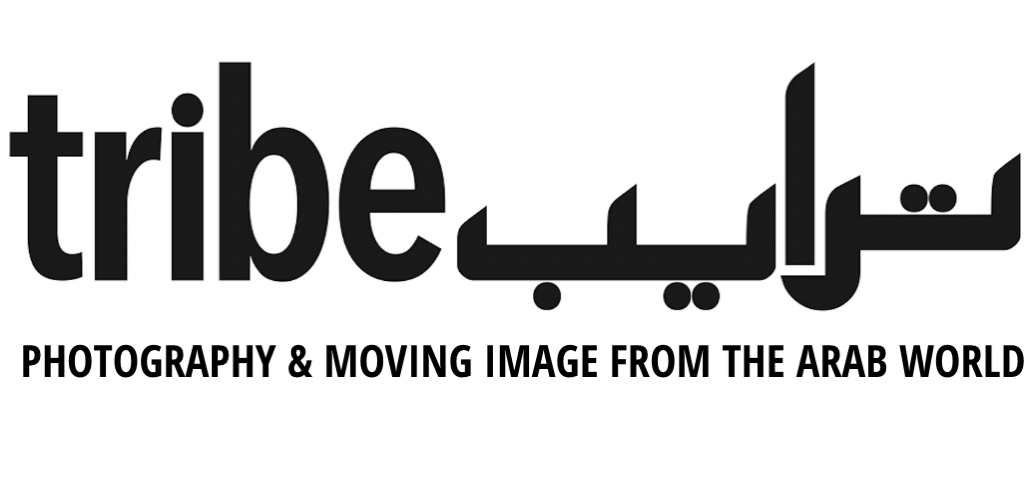Ahmed Mater: The Archive in Performance
Charting and scripting a record of Saudi Arabia
Ahmed Mater, Desert of Pharan (2008 - 2015). Courtesy of the artist.
With text by Joumana Gouth, arts writer and curator.
Saudi Arabia's recent history has been minimally recorded. Absent an archive, the past does not enter the present. Missing the link, series of today fall away and the moment does not cohere. In this tumult, scenes, characters and narratives cannot be assimilated, let alone performed. The urban scene structures the psychological condition, with each space - interior, exterior - forged through constant cycles of reconfiguration. In the spaces between these currents, life carries on. On some sites, the shockwaves of mass demolition and reconstruction are so recent, so regular, that the performance and its effects are only just starting to be staged.
Day-to-day life continues, the torrents of change around us buffering past and unfurling through future. We find ourselves in the eye of the storm - his great swirling narrative picks up its pace only to drop it again, before reorienting its direction and re-initiating its force some weeks or months later.
Caught as we are, with bated breath, between applause or hiss, how do we perform? The drumroll, that timeless signifier of anticipation - a nail-biting, beat-skipping prelude to a performance - is omnipresent. For what comes next on Saudi's cultural, social and political landscape? In the midst of what sees like a perpetual cliff-hanger, how do we delineate the truth from fiction?
The performance plays out around us, but we too are under a spotlight. A rabbit 'caught in the headlights' freezes. A human, under the harsh glare of the media - or caught in the perpetual brightness of a towering construction site - hides.
For Ahmed Mater, this moment in time has led to his own performance: works created through actions - found, recorded, spontaneous and sometimes scripted - with his compulsion to document keeping pace with the tempo of seismic and rapid change. His Desert of Pharan series, grouped into distinct zones of reflection, brings to the for Saudi's main protagonist, Makkah. Here we have an archive being written and re-written, perhaps the country's only archive of what was and is now on the horizon.
The archive, wrote Michel Foucault, is not necessarily 'inscribed in an unbroken linearity, but comprised of events composed together in accordance with multiple relations, maintained or blurred in accordance with specific regularities; that which determines that they do not withdraw at the same pace in time, but shine, as it were, like stars, some that seem close to us shining brightly from far off, while others that are in face close to us are already growing pale.'1
Under this premise, the Makkah of old, depicted being slowly dismantled within Mater's photographs and films, is the closest star - that which is already growing pale. In this way, the archive, or the continual process of recording, is for Mater akin to the process of scripting.
A ceremonial drummer sounding anticipation and the presence of the worker Jarbil on both a heavenly ascent and a bizarre commute, shackled to labour, comprise the prologue. They are our guides; the installation of old windows the backdrop that hints at other times. The photographs are scenes. The play's climatic spectacle comes in lightning; Magnetism is a resolute finale. The 'distinct figures, composed together in accordance with multiple relations'1 draw on the undercurrents of Saudi's present realities. For Mater, this has been a lifetime of work; for Saudi it is but a brief moment on a timeline characterized by much change, yet it is a fulcrum between past and future. Anticipation lodges within the story as we wait, the world waits, to see what's next. Although, like any audience, we know this will inevitable tip towards a future in which the details are yet to be scripted.
Mater's action involves accumulation; pushing the boundaries of Saudi's own self-definition through a proliferating nexus of information. Desert of Pharan, a series of hundreds of works, charts the site of Makkah, with its expansive, at time destructive or awe-inspiring changes. This conveyance of activity, a people, a city being folded down only to be resurrected taller, brighter, more appealing, plays as the opening scene. This performance is hot and overwhelming in the summer, cold and windy through the winter. Amid this carousel of changing tableaux, people and their lives seem to stand still.
Mater employs this diligent and assertive lens to script an idea of Saudi, using its own cultural, social and political reality to thread the tale. Ashab Al-Lal, or Fault Mirage, dow so through archival slides. Juxtaposed, they pin past to future through images that both collide and merge - confusing what is real with what has been fictionalized. Oil pipelines slice through groups of barefooted children, Sheikhs kneel and pray to a backdrop of an oil mine; holes burn through skies over European holiday snaps.
Mater's sculptural works may be spontaneous or scripted, but are most often improvised. They tap into the propensity for the accidental even within finely authored plans. Lightning strikes its billion bolts of electricity into the desert, rendering something spectacular and strange from the expanse of nothing. So too with these scenes of pre- and post-apocalyptic cityscapes - some abandoned, some planned, some emerging from the desert. The skyline sits silent as only glass towers can - pregnant with implications of their fragility, yet strident in their potential, too.
These controlled experiments point to both the force of nature and man's attempts to wield power over it. To harness a desert, build a city where once there was but sand, requires a storm - a momentous push of energy in one direction. We wonder daily if this is a climax.
Drum Roll, Please - if now comes the storm, what calm will come after?
1 Michel Foucault, The Archeology of Knowledge and the Discourse on Language (New York: Pantheon Books, 1972), p. 129.


